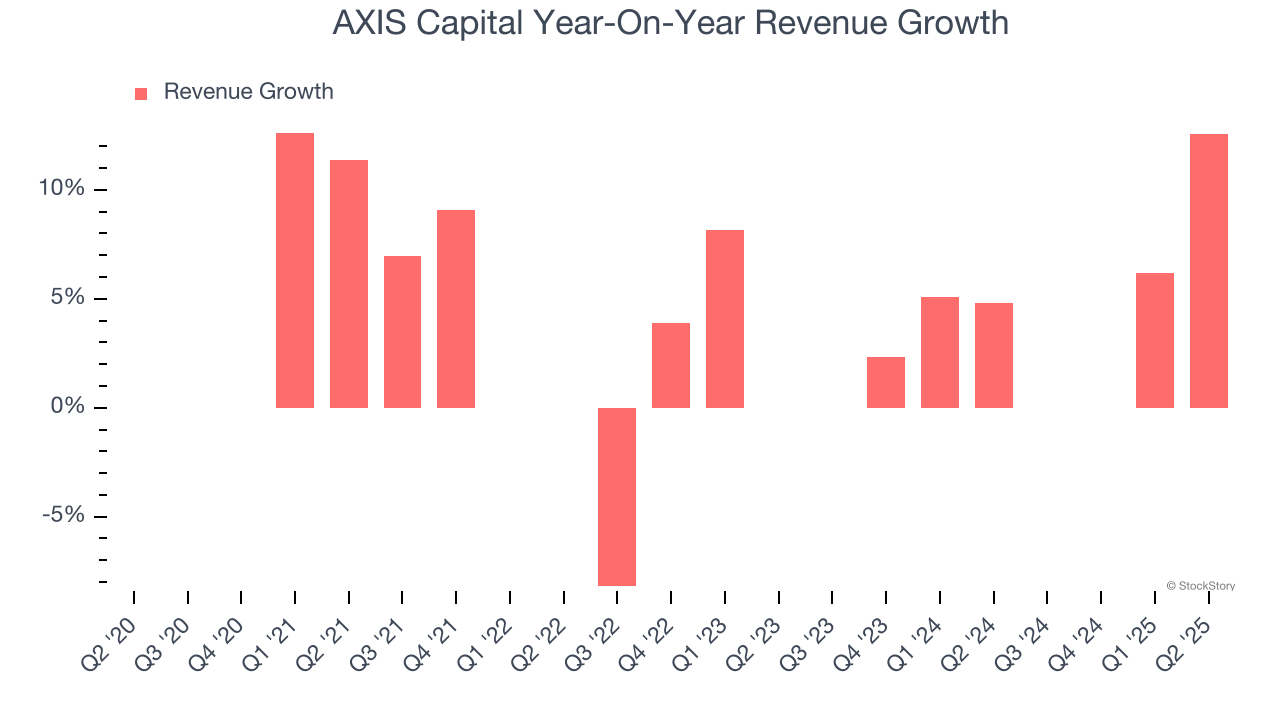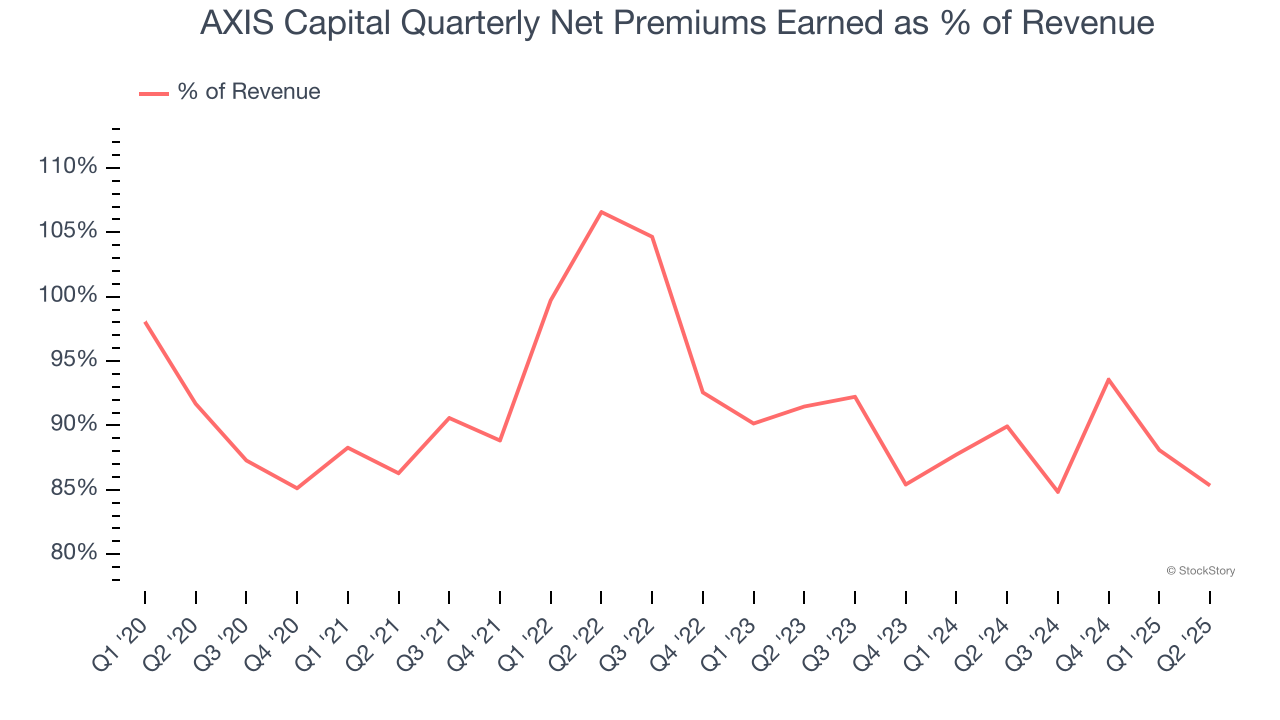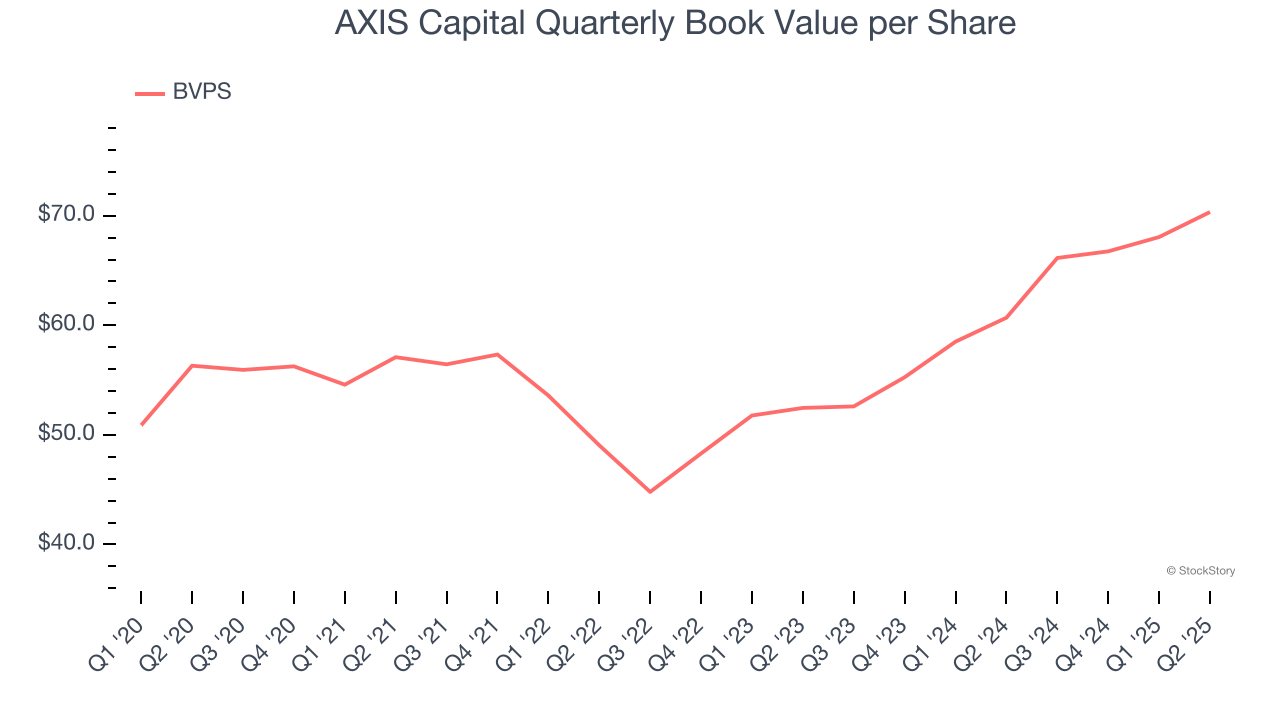
Global specialty insurer AXIS Capital Holdings Limited (NYSE: AXS) met Wall Street’s revenue expectations in Q2 CY2025, with sales up 12.6% year on year to $1.63 billion. Its GAAP profit of $2.72 per share was 8.1% below analysts’ consensus estimates.
Is now the time to buy AXIS Capital? Find out by accessing our full research report, it’s free.
AXIS Capital (AXS) Q2 CY2025 Highlights:
- Net Premiums Earned: $1.39 billion vs analyst estimates of $1.44 billion (6.8% year-on-year growth, 2.9% miss)
- Revenue: $1.63 billion vs analyst estimates of $1.64 billion (12.6% year-on-year growth, in line)
- Combined Ratio: 88.9% vs analyst estimates of 91.2% (2.3 percentage point beat)
- EPS (GAAP): $2.72 vs analyst expectations of $2.96 (8.1% miss)
- Market Capitalization: $7.57 billion
Company Overview
Founded in the aftermath of the 9/11 attacks when insurance capacity was scarce, AXIS Capital Holdings Limited (NYSE: AXS) is a global specialty insurer and reinsurer that provides coverage for complex risks across property, liability, professional lines, cyber, and other specialty markets.
Revenue Growth
Insurance companies earn revenue from three primary sources:
- The core insurance business itself, often called underwriting and represented in the income statement as premiums
- Income from investing the “float” (premiums collected upfront not yet paid out as claims) in assets such as fixed-income assets and equities
- Fees from various sources such as policy administration, annuities, or other value-added services
Over the last five years, AXIS Capital grew its revenue at a tepid 4.8% compounded annual growth rate. This fell short of our benchmark for the insurance sector and is a rough starting point for our analysis.

Long-term growth is the most important, but within financials, a half-decade historical view may miss recent interest rate changes and market returns. AXIS Capital’s annualized revenue growth of 7.2% over the last two years is above its five-year trend, but we were still disappointed by the results.  Note: Quarters not shown were determined to be outliers, impacted by outsized investment gains/losses that are not indicative of the recurring fundamentals of the business.
Note: Quarters not shown were determined to be outliers, impacted by outsized investment gains/losses that are not indicative of the recurring fundamentals of the business.
This quarter, AXIS Capital’s year-on-year revenue growth was 12.6%, and its $1.63 billion of revenue was in line with Wall Street’s estimates.
Net premiums earned made up 90.6% of the company’s total revenue during the last five years, meaning AXIS Capital lives and dies by its underwriting activities because non-insurance operations barely move the needle.

While insurers generate revenue from multiple sources, investors view net premiums earned as the cornerstone - its direct link to core operations stands in sharp contrast to the unpredictability of investment returns and fees.
Software is eating the world and there is virtually no industry left that has been untouched by it. That drives increasing demand for tools helping software developers do their jobs, whether it be monitoring critical cloud infrastructure, integrating audio and video functionality, or ensuring smooth content streaming. Click here to access a free report on our 3 favorite stocks to play this generational megatrend.
Book Value Per Share (BVPS)
Insurance companies are balance sheet businesses, collecting premiums upfront and paying out claims over time. The float – premiums collected but not yet paid out – are invested, creating an asset base supported by a liability structure. Book value captures this dynamic by measuring:
- Assets (investment portfolio, cash, reinsurance recoverables) - liabilities (claim reserves, debt, future policy benefits)
BVPS is essentially the residual value for shareholders.
We therefore consider BVPS very important to track for insurers and a metric that sheds light on business quality because it reflects long-term capital growth and is harder to manipulate than more commonly-used metrics like EPS.
AXIS Capital’s BVPS grew at a tepid 4.5% annual clip over the last five years. However, BVPS growth has accelerated recently, growing by 15.8% annually over the last two years from $52.47 to $70.34 per share.

Over the next 12 months, Consensus estimates call for AXIS Capital’s BVPS to grow by 16.1% to $71.58, top-notch growth rate.
Key Takeaways from AXIS Capital’s Q2 Results
We struggled to find many positives in these results. Its net premiums earned missed and its EPS fell short of Wall Street’s estimates. Overall, this was a weaker quarter. The stock remained flat at $97.15 immediately following the results.
Should you buy the stock or not? What happened in the latest quarter matters, but not as much as longer-term business quality and valuation, when deciding whether to invest in this stock. We cover that in our actionable full research report which you can read here, it’s free.






